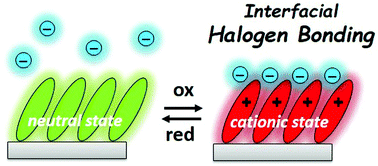Electrochemically driven interfacial halogen bonding on self-assembled monolayers for anion detection†
Abstract
Electrochemically driven interfacial halogen bonding between redox-active SAMs and halide anions was quantitatively studied for the first time. The halogen bond donor properties were switched on by electrochemically controlling the oxidation state of the adsorbates. Experimental data and simulation show high binding enhancement towards halide anions compared to homogeneous systems.



 Please wait while we load your content...
Please wait while we load your content...